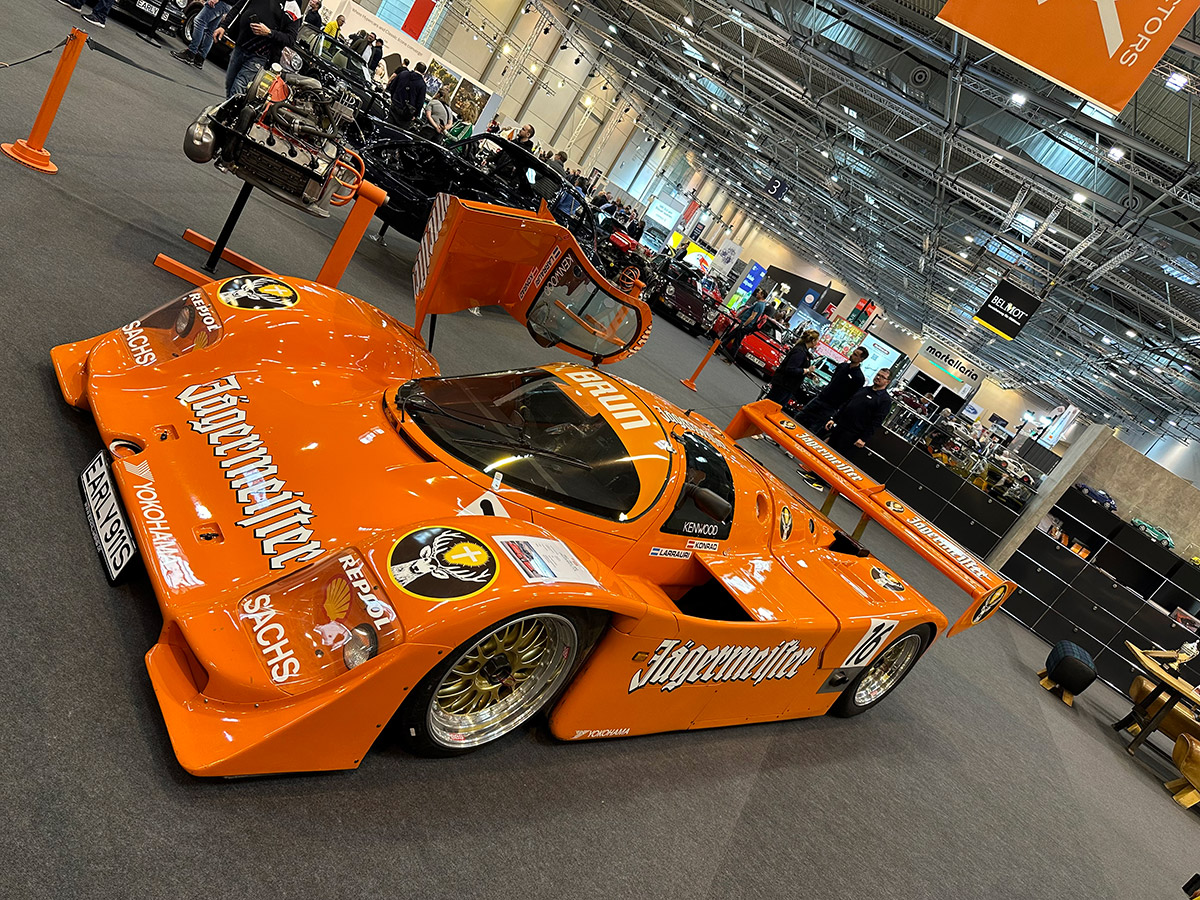Mercedes 2-litre Targa Florio racing car from 1924. Paint analysis by restorer Dr Gundula Tutt. (Photo index number in the Mercedes-Benz Classic Archives: D829648)
- Extensive restoration of the legendary supercharged racing car after 100 years
- Overall victory and triple class victory in the 1924 Targa Florio
- Mercedes-Benz Classic to present the original racing car at international events in 2024
100 years after Mercedes’ triumph in the legendary Targa Florio endurance race in Sicily on 27 April 1924, a Mercedes 2-litre racing car used at the time is returning to the road. Mercedes-Benz Classic has restored the vehicle from the company’s own collection to the highest standards of authenticity. It will be presented at international events in 2024. The racing car with its characteristic red paintwork is a highlight in the 130 years of Mercedes-Benz motorsport.
“Mercedes made motorsport history with this racing car in 1924. A century later, the vehicle can now be seen in action again in its original condition – meaning that Mercedes-Benz Classic is making history. That’s because something like this is only possible thanks to the combined expertise of the Mercedes-Benz Classic Centre, the Mercedes-Benz Classic Archive and a strong network of experts. This fascinating project makes the innovative strength of our company tangible – from its beginnings in 1886 to the future.”
Marcus Breitschwerdt, Head of Mercedes-Benz Heritage
Mercedes-Benz Classic accompanied the restoration of the Targa Florio racing car and its return to action – with extensive photo and video recordings.
- The documentary film will be released to coincide with the 100th anniversary on 27 April 2024. It can be found in the Mercedes-Benz Classic Web Special:
https://www.mercedes-benz.com/targaflorio/ - Press photos of the complete restoration project and video footage:
https://mercedes-benz-archive.com/marsMuseum/de/instance/ko/Mercedes-2-l-Targa-Florio-Rennwagen.xhtml?oid=191293448 - The Mercedes-Benz press kit on the media site contains numerous details and background information on the restoration project, the vehicle and the 1924 Targa Florio.
Victory in Sicily
In the early 1920s, the Targa Florio was a top event in European motorsport. It offered German companies an important opportunity because, after the First World War, they were initially excluded from participating in the European Grand Prix Championship. Mercedes took second place overall in 1921 and a privateer won in a Mercedes in 1922. In 1924, the brand came back to compete with a new racing car. This vehicle was based on designs by Paul Daimler. Ferdinand Porsche, Technical Director and Chief Development Officer of Daimler-Motoren-Gesellschaft from April 1923 on, developed it to the point where it was ready to race.
The racing team travelled from Stuttgart to Sicily with four 2-litre competition cars on their own power. Mercedes entered three of these racing cars in the Targa Florio and Coppa Florio. One special highlight was the red paintwork, which was actually reserved for Italian vehicles: it was intended to prevent any potential interference by Italian fans during the race. German racing cars were usually painted white back then.
Mercedes works driver Christian Werner won the Targa Florio over a distance of 432 kilometres (four laps of 108 kilometres each) in the number 10 car, clocking a time of 6:32:37.4 hours. It was the first victory in the Targa Florio for a driver from outside Italy. Werner also led the team in a triple class victory for racing cars with a displacement of up to 2 litres. In the overall standings, Christian Lautenschlager (number 32) finished in 11th place, Alfred Neubauer (number 23) in 16th place. The Mercedes team received the Coppa Termini as the best factory team. Werner then put the icing on the cake: another lap was required for the Coppa Florio classification. The works driver from Stuttgart also won this contest after a total of 8:17:1.4 hours. His teammates finished 9th (Lautenschlager) and 13th (Neubauer).
Restoration with maximum authenticity
In 2022, Mercedes-Benz Classic decided to rebuild the original 2-litre Targa Florio racing car from the company’s own collection as authentically as possible for the anniversary – in accordance with the high standards of a factory restoration. It is the vehicle in which Christian Lautenschlager completed the Targa Florio in 1924. Werner’s winning car has not survived.
The removal of the racing car from the Mercedes-Benz Museum was followed by a meticulous inventory analysis and extensive search in the Mercedes-Benz Classic Archive – the brand’s “memory”. Original technical drawings and historical photos are crucial sources for the authentic restoration. The Classic Centre carries this out together with a network of experts.
Project highlights
- Repair of the supercharged engine: This includes welding work on the housing, reworking the original camshafts and restoring screw connections with hybrid threads typical of the time.
- Body work: The racing car, which was converted by a private customer in the 1920s, is restored to its original condition according to historical blueprints.
- Paintwork: Detailed analysis of small remnants of the original paintwork provides information about the colour scheme and method of painting in 1924. The racing car is repainted by hand using a brush and reconstructed linseed oil paint.
At every stage, the Classic Centre experts and external partners preserve the original substance as much as possible. For example, traces of past body modifications remain visible under the historically correct paintwork. Very sensitive original components are conserved. For example, a faithful reproduction of the steering wheel from 1924 will replace the original for the car’s outings in the anniversary year.
In April 2024, the racing car completed its first drive following the restoration – on the test track at the Mercedes-Benz plant in Untertürkheim. This is where the vehicle was built in the racing workshop 100 years ago. And it set off from there in 1924 on its journey to Sicily, which ended with one of the greatest successes in the 130 years of Mercedes-Benz motorsport history.























